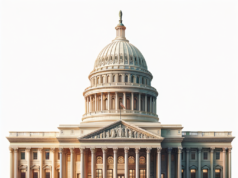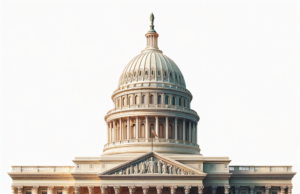Contents
- 1 Understanding the Current Landscape of Gun Violence in the United States
- 2 Analyzing the Statistical Surge: A Closer Look at Recent Trends
- 3 Demographic Disparities: Who is Most Affected by Gun Violence?
- 4 The Impact of Legislation: Evaluating Gun Control Measures and Their Efficacy
- 5 Societal Consequences: The Broader Implications of Rising Gun Violence Rates
- 6 Moving Forward: Strategies for Addressing and Mitigating Gun Violence
In recent years, gun violence has emerged as a pressing public health crisis in the United States, drawing attention from policymakers, advocacy groups, and the general public alike. The alarming statistics surrounding this issue reveal a stark reality that demands urgent action and comprehensive understanding. This article aims to dissect the current landscape of gun violence, analyze recent trends, explore demographic disparities, evaluate the impact of legislation, and discuss the broader societal implications, ultimately proposing strategies for addressing and mitigating this pervasive issue.
Understanding the Current Landscape of Gun Violence in the United States
Gun violence in the United States has reached unprecedented levels, with thousands of lives lost each year due to homicides, suicides, and accidental shootings. According to the Centers for Disease Control and Prevention (CDC), firearms were involved in over 45,000 deaths in 2020 alone, marking a significant increase from previous years. This surge in gun-related fatalities has prompted widespread concern, as communities grapple with the fear and trauma associated with gun violence. The complexity of this issue is compounded by a myriad of factors, including socioeconomic conditions, mental health challenges, and the accessibility of firearms, all of which contribute to the ongoing crisis.
Analyzing the Statistical Surge: A Closer Look at Recent Trends
Recent data indicates a troubling upward trajectory in gun violence, particularly in urban areas. The Gun Violence Archive reported a staggering increase in mass shootings, with 2021 witnessing over 600 incidents, a sharp rise from previous years. Additionally, the FBI’s Uniform Crime Reporting Program highlights a significant spike in gun homicides, which surged by nearly 30% from 2019 to 2020. This statistical surge is not merely a reflection of isolated events but rather a broader trend that underscores the urgent need for comprehensive analysis and intervention. Experts attribute this increase to various factors, including the COVID-19 pandemic, which exacerbated existing social tensions and economic disparities, leading to heightened violence in many communities.
Demographic Disparities: Who is Most Affected by Gun Violence?
Gun violence does not affect all demographics equally; certain communities bear a disproportionate burden. Data reveals that young Black men are particularly vulnerable, with homicide rates significantly higher than their white counterparts. According to the CDC, Black males aged 15 to 34 accounted for nearly half of all gun homicide victims in 2020. Furthermore, gun violence disproportionately impacts low-income neighborhoods, where systemic issues such as poverty, lack of access to education, and limited healthcare resources create an environment conducive to violence. Understanding these demographic disparities is crucial for developing targeted interventions that address the root causes of gun violence and promote equity in public safety.
The Impact of Legislation: Evaluating Gun Control Measures and Their Efficacy
The debate surrounding gun control legislation remains contentious, with advocates arguing for stricter measures to curb gun violence while opponents cite Second Amendment rights. Various states have enacted laws aimed at reducing gun violence, such as universal background checks and red flag laws, which allow for the temporary removal of firearms from individuals deemed a risk to themselves or others. However, the efficacy of these measures is often debated. Research indicates that states with stricter gun laws tend to experience lower rates of gun deaths, suggesting that legislative action can play a significant role in mitigating gun violence. Nonetheless, the patchwork nature of gun laws across the country complicates efforts to address this issue comprehensively.
Societal Consequences: The Broader Implications of Rising Gun Violence Rates
The ramifications of rising gun violence extend beyond the immediate loss of life, permeating the fabric of society. Communities plagued by gun violence experience heightened fear and trauma, leading to a breakdown of social cohesion and trust. The economic impact is also significant, with increased healthcare costs, loss of productivity, and diminished property values in high-crime areas. Additionally, the psychological toll on survivors and witnesses can result in long-term mental health issues, further straining community resources. As gun violence continues to escalate, the broader implications for public health, safety, and economic stability become increasingly evident, necessitating a comprehensive response from all sectors of society.
Moving Forward: Strategies for Addressing and Mitigating Gun Violence
To effectively address and mitigate gun violence, a multifaceted approach is essential. This includes implementing evidence-based policies that prioritize community engagement and prevention strategies. Investing in mental health services, educational programs, and economic opportunities can help address the root causes of violence. Furthermore, fostering collaboration between law enforcement, community organizations, and public health officials can enhance the effectiveness of interventions. Advocacy for comprehensive gun control measures, coupled with grassroots efforts to promote safe firearm practices, is crucial for creating a culture of safety. Ultimately, a collective commitment to addressing gun violence is necessary to protect lives and build healthier communities.
The stark reality of gun violence in the United States demands immediate attention and action from all sectors of society. By understanding the current landscape, analyzing recent trends, recognizing demographic disparities, evaluating legislation, and acknowledging the broader societal implications, we can begin to formulate effective strategies for addressing this crisis. It is imperative that we work collectively to create a safer environment for all, ensuring that the tragic statistics surrounding gun violence become a thing of the past. Only through comprehensive and collaborative efforts can we hope to turn the tide on this pressing issue and foster a future free from the scourge of gun violence.

























